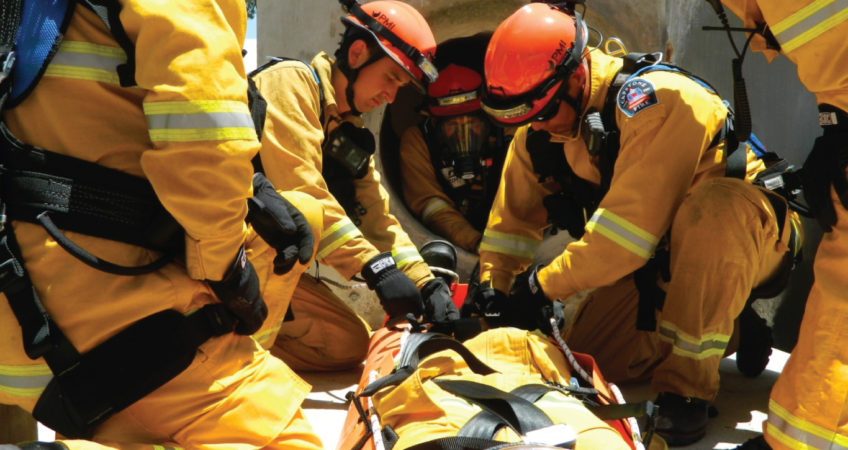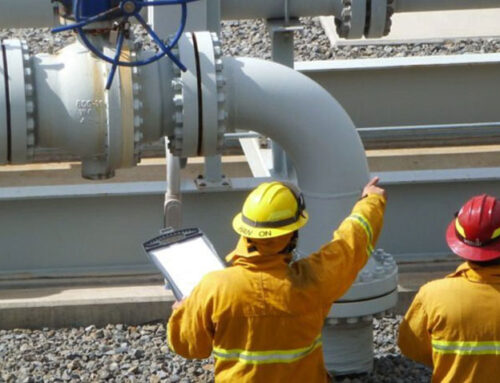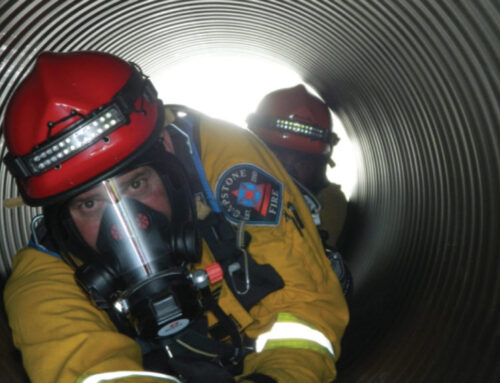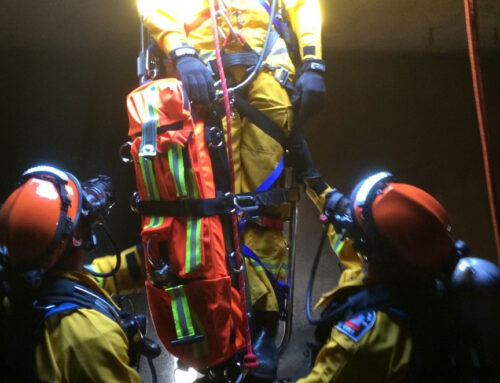People often wonder why confined space rescue is something that professionals urge workers not to try on their own. These spaces are very dangerous because they’re narrow and constricting, and can often contain hazardous materials in liquid or gas form which can be harmful and even fatal.
What is confined space rescue in the first place?
Confined space rescue is a subset of technical rescue operations that involves the rescue and recovery of victims trapped in a confined space or in a place only accessible through confined spaces such as underground vaults, storage silos, storage tanks or sewers.
OSHA 1910.146 governs Permit-Required confined spaces. Definition of a “confined space” is:
(1) Is large enough and so configured that an employee can bodily enter and perform assigned work; and
(2) Has limited or restricted means for entry or exit (for example, tanks, vessels, silos, storage bins, hoppers, vaults, and pits are spaces that may have limited means of entry.); and
(3) Is not designed for continuous employee occupancy.
Three Main Types of Confined Space Rescue Categories
The three main types of confined space rescue are self rescue, non-entry rescue, and entry rescue.
Self rescue refers to situations in which the confined person is able to free themselves, either with guidance or on their own if they become aware of a critical condition or begins to experience symptoms of exposure. Alternatively, an entry monitor, located outside the space may recognize a new hazard and may request the entrant to leave the space before they are affected. This is the preferred rescue method, as there is less risk and time involved in waiting for retrieval.
Non-entry rescue refers to situations where extrication is involved with an incapacitated person without having anyone else enter the confined space. This is typically done by pulling the person out of the confined space via their safety line.
The final type of confined space rescue, entry rescue, is used as a last resort option. This occurs when additional trained personnel must enter the confined space to retrieve an incapacated person and remove them to safety. Entry rescues must be carefully planned and executed because it can create more victims needed to be removed if the rescue goes awry. Trained Rescuers must be aware of surroundings, IDLH conditions and must continually re-evaluate the situation.
Why is confined space rescue so dangerous?
Confined spaces have the potential for life threatening atmospheric conditions due to buildup of noxious gas or limited oxygen supply. Time is limited, the amount of time that may be required to rescue someone from a time sensitive or emergency confined space is only four to six minutes. Rescue teams should be in place, with pre-plans created in advance so if a rescue is required it can happen immediately.
Calling 9-1-1 should not be your response plan. Organizations like Capstone Fire & Safety Management are available to pre-stage, pre-plan and assist in confined space rescue situations, particularly those that involve OSHA permitted confined spaces. We don’t ever recommend trying to execute a rescue on your own, so never be afraid to reach out to organizations that can execute it safely, quickly, and with compliance.





